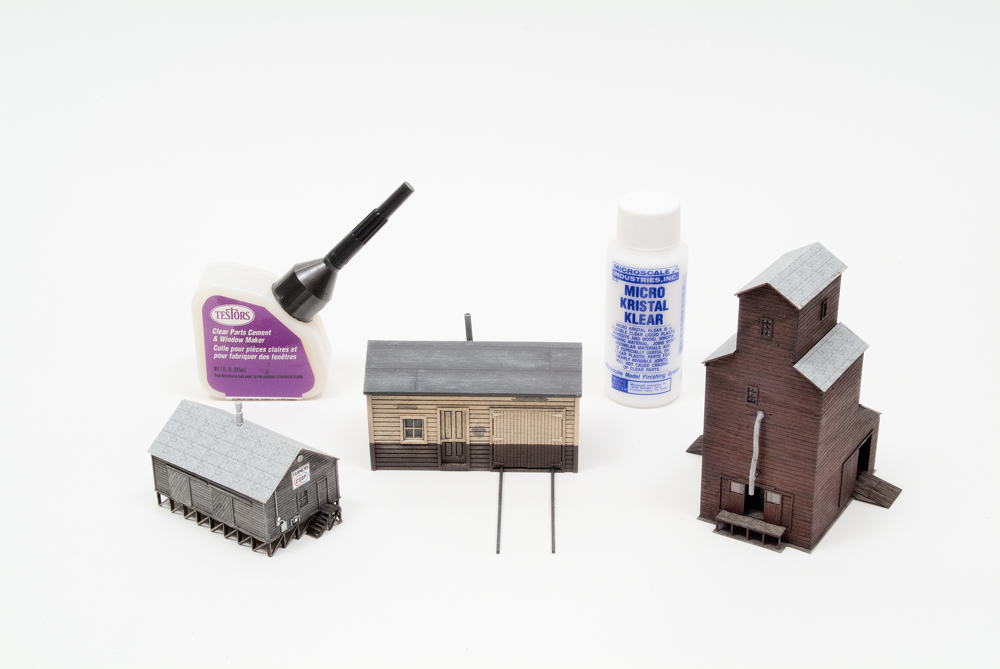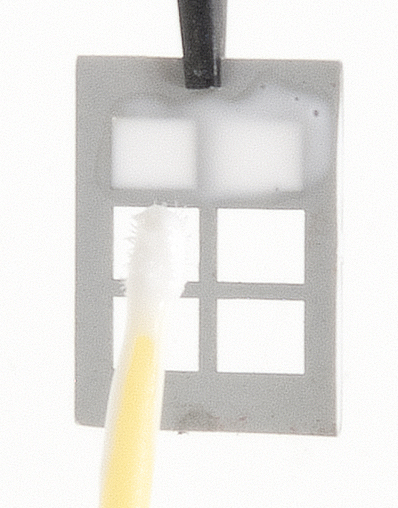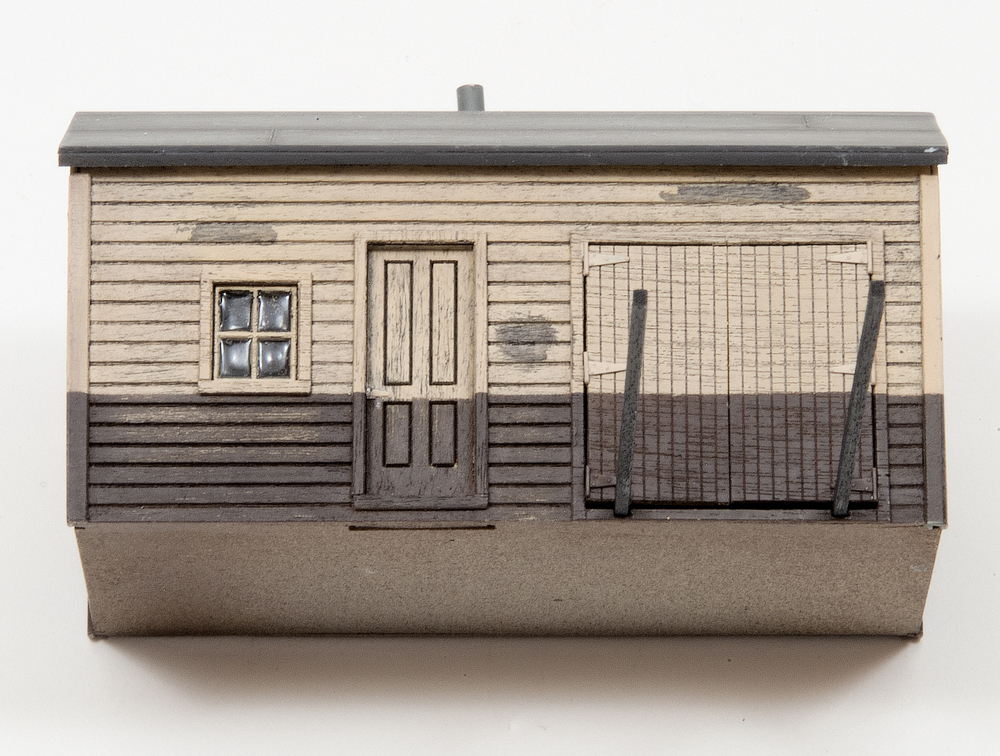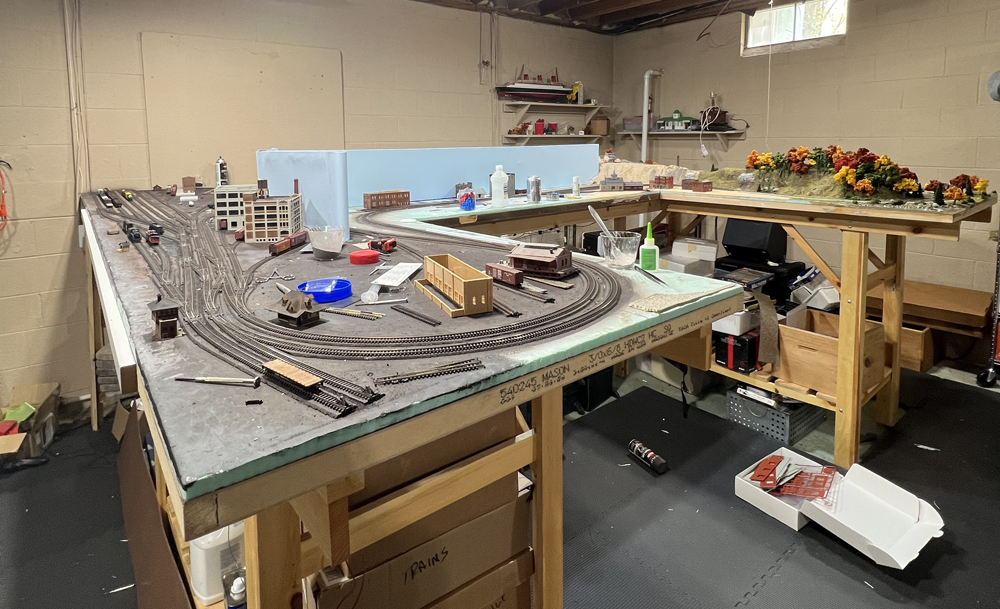Microscale Kristal Klear is a versatile adhesive. One of its uses is to secure clear parts to models. But in a few simple steps, the adhesive can also be used for window glazing, 1. Kristal Klear works best on smaller window panes.
Start by dipping a Microbrush into the Kristal Klear. Then, working from the back of the window, set the brush into the corner of the pane and drag it across, 2. The Kristal Klear comes out of the bottle white, but it dries clear. Repeat this process until all of the panes are filled. It takes about 45 minutes for the Kristal Klear to dry.
Though I used this technique on structure windows, 3, it also works well for door glazing, vehicle windows, and smaller windows on cabooses, locomotives, and passenger cars.

1. Microscale Kristal Klear works well for glazing windows on smaller structures. You can also use Testor’s Clear Parts Cement & Window Maker.

2. Pull a Microbrush with Kristal Klear across the window pane. Work from the back of the window to keep the material off the window frame.

3. The windows on this HO scale Northern Pacific shed were finished with Kristal Klear. It takes about 45 minutes for the windows to dry to a clear finish.














